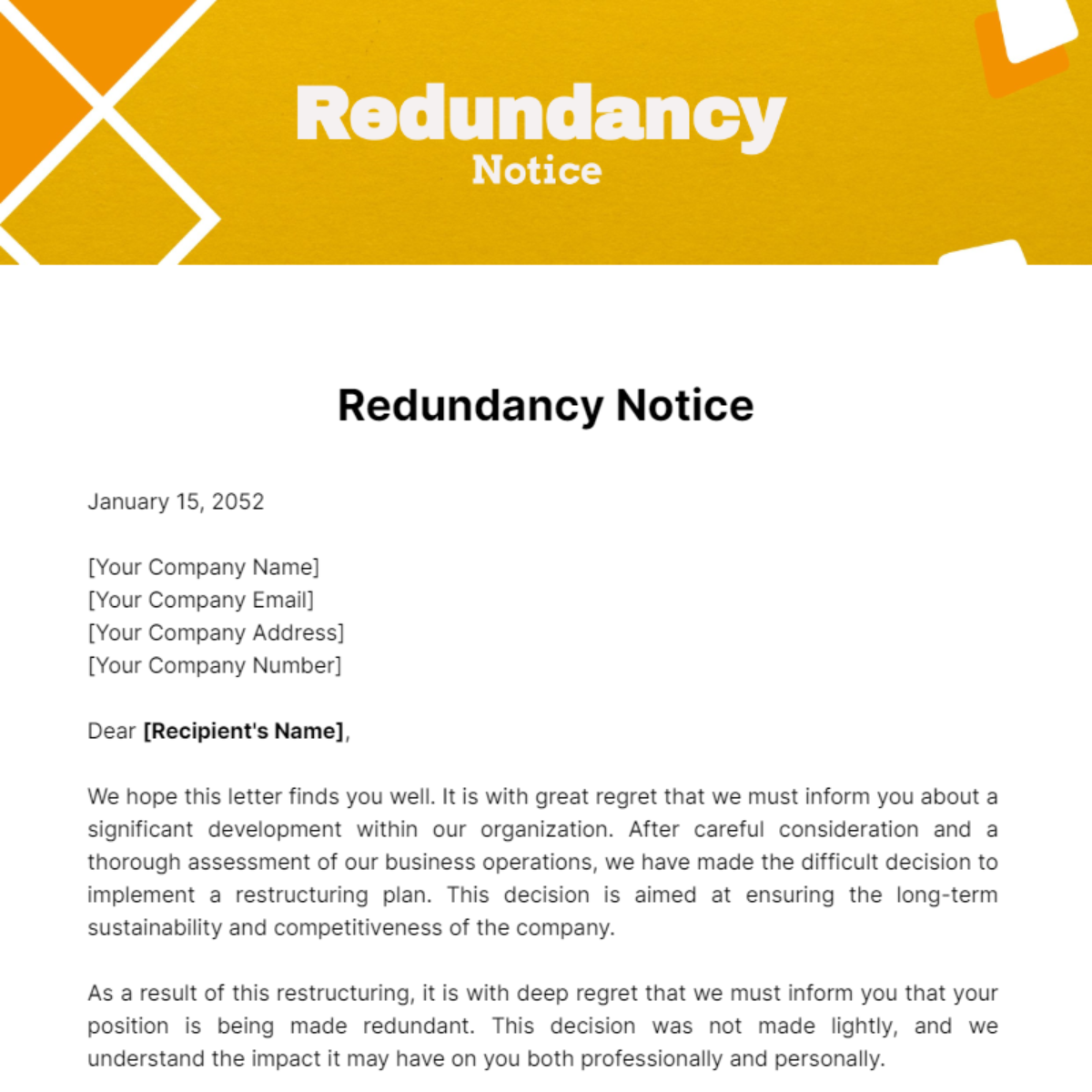Checking Out the Interaction Between Firm Redundancy and Organizational Adaptability for Future Growth
In the dynamic landscape of today's business globe, the detailed connection between business redundancy and business adaptability arises as a crucial variable for continual growth and success. Firms usually deal with the difficulty of striking a delicate balance in between preserving a degree of redundancy to alleviate threats and cultivating adaptability to react quickly to the ever-evolving market demands.
Importance of Firm Redundancy
Firm redundancy is a critical aspect that improves business strength and alleviates functional risks. By incorporating redundancy procedures within the organizational structure, firms can better withstand unpredicted disturbances and fluctuations in business environment. Redundancy serves as a calculated barrier, allowing companies to adapt and react successfully to unforeseen obstacles without compromising essential operations.
One secret aspect of the significance of company redundancy is its role in guaranteeing connection during times of dilemma. When faced with abrupt adjustments or emergency situations, repetitive systems, resources, or employees can tip in to maintain critical functions and protect against prevalent interruptions. This connection not just safeguards the company's online reputation and consumer depend on yet additionally lessens economic losses and functional downtime.

Techniques for Organizational Versatility

Another critical strategy is spending in technology and facilities that can support adaptability and scalability. Applying digital devices, automation, and data analytics can improve procedures, enhance performance, and provide useful insights for educated decision-making. Moreover, creating versatile business frameworks that permit for fast changes to market dynamics and customer requirements is essential for staying competitive in a rapidly advancing setting. By proactively identifying potential disruptions and chances, companies can proactively adapt and grow in an ever-changing service landscape.
Harmonizing Redundancy and Versatility
Attaining a harmonious balance between operational redundancy and organizational flexibility is extremely important in browsing the intricacies of a vibrant business atmosphere. Striking the appropriate balance in between redundancy and adaptability is a delicate procedure that calls for a deep understanding of the company's goals, industry characteristics, and threat tolerance.
To achieve this balance, firms need to carry out normal assessments of their operations to determine locations where redundancy is needed for risk mitigation check this and where versatility can drive technology and development. Carrying out flexible frameworks, promoting a culture of continuous discovering and enhancement, and urging open communication throughout all levels of the organization are crucial methods to harmonize redundancy and flexibility efficiently. By aligning these 2 important elements, companies can position themselves for sustainable development and success in an ever-changing company landscape.
Case Researches on Adaptation Success
In examining instances of successful business adaptation, it becomes apparent that the interaction between operational redundancy and versatility is a defining consider forming resilient businesses. One compelling study is that of Netflix. Originally a DVD rental service, Netflix demonstrated exceptional adaptability by read more transitioning into a streaming platform when digitalization interrupted the sector. By purposefully purchasing technology and web content development, Netflix not only survived but flourished in a quickly evolving market. One more standout instance is Amazon. Starting as an on-line book shop, Amazon constantly adjusted its business design, broadening into diverse markets such as cloud computer and man-made intelligence. This adaptability allowed Amazon to stay ahead of competitors and meet transforming consumer demands. Finally, Adobe offers a significant picture of effective adaptation. The firm moved from selling software licenses to a subscription-based design, guaranteeing recurring profits streams and boosted consumer interaction. These study emphasize the significance of functional redundancy paired with business adaptability in fostering lasting development and competitiveness.
Building Durability for Future Development
Building resilience for future growth needs a tactical placement of operational processes with market characteristics and arising trends. Companies have to adjust to altering environments by fostering a society of adaptability, advancement, and constant improvement.
Moreover, fostering browse around these guys solid connections with stakeholders, such as consumers, staff members, vendors, and the community, is essential for maintaining and weathering unpredictabilities count on and assistance throughout rough times. Effective communication and openness play a vital role in building strength, as they help help with and straighten expectations cooperation in browsing uncertainties.
In addition, organizations need to prioritize discovering and advancement campaigns to upskill workers and equip them with the essential devices to adjust to transforming situations. By purchasing their labor force, companies can enhance their versatility and dexterity, inevitably strengthening their resilience for sustainable future growth.
Verdict

In the vibrant landscape of today's business world, the detailed connection in between company redundancy and business adaptability emerges as a crucial aspect for continual growth and success. Business often deal with the obstacle of striking a delicate balance in between keeping a level of redundancy to alleviate threats and fostering versatility to react swiftly to the ever-evolving market demands.To attain this equilibrium, companies need to perform regular evaluations of their procedures to recognize locations where redundancy is required for danger reduction and where flexibility can drive innovation and growth.In final thought, the interaction in between company redundancy and organizational versatility is critical for future growth. Building resilience with a mix of redundancy and flexibility will certainly ensure that companies are prepared for the challenges of the future.